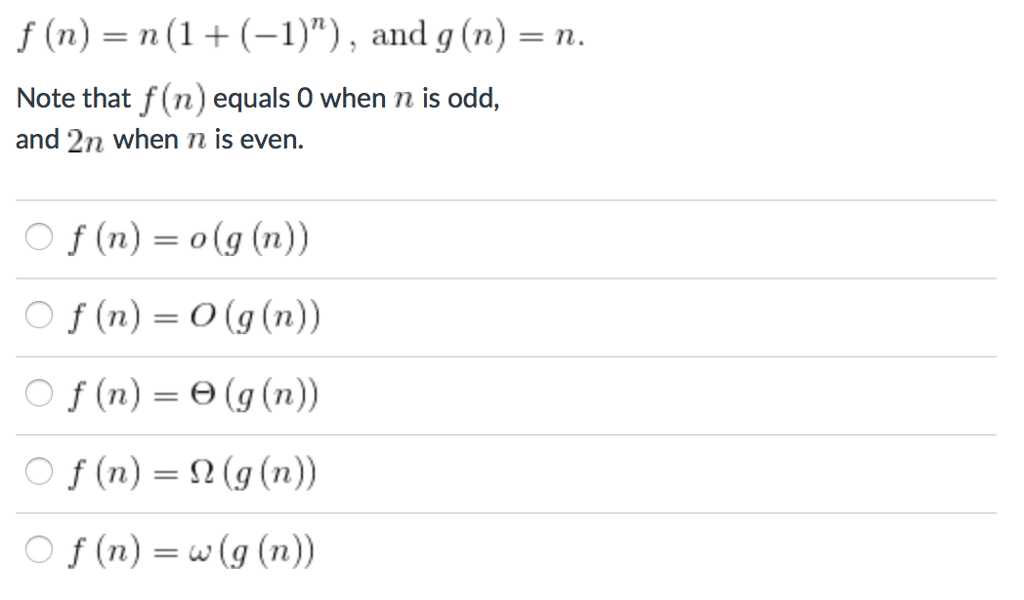Answered step by step
Verified Expert Solution
Question
1 Approved Answer
f(n) = n(1 + (- 1)^n), and g(n) = n. Note thatf(n)equals0whennis odd, and 2n whennis even. f(n) = o(g(n)) f(n) =O(g(n)) f(n) = Theta

Step by Step Solution
There are 3 Steps involved in it
Step: 1

Get Instant Access to Expert-Tailored Solutions
See step-by-step solutions with expert insights and AI powered tools for academic success
Step: 2

Step: 3

Ace Your Homework with AI
Get the answers you need in no time with our AI-driven, step-by-step assistance
Get Started


